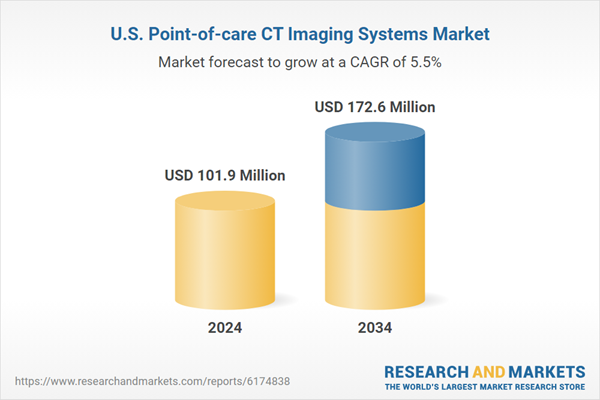Healthcare professionals are under growing pressure to make timely clinical decisions, especially in emergency departments, intensive care units (ICUs), and trauma centers, where every second counts. Traditional imaging workflows often involve transporting patients to centralized radiology departments, which can delay diagnosis and treatment, particularly for critically ill or unstable patients.
Rising Demand for Full-Sized CT Scanners
The full-sized CT scanners segment held a significant share in 2024, as point-of-care (PoC) technologies continue to evolve. While PoC CT systems are gaining traction for their mobility and immediacy, full-sized scanners still dominate when high-resolution, multi-slice imaging is required for complex diagnostics. Hospitals and large imaging centers rely on these machines for comprehensive body scans, detailed soft tissue analysis, and advanced contrast studies.Growing Adoption in Neurology
The neurology segment generated a substantial share in 2024, as rapid brain imaging becomes critical in emergencies and intensive care settings. Neurological emergencies such as stroke, traumatic brain injury, and hemorrhage require immediate imaging to guide treatment decisions. PoC CT systems are particularly valuable here, allowing for bedside scans that eliminate delays associated with patient transport to radiology departments. This capability significantly reduces door-to-scan times, improving clinical outcomes and supporting time-sensitive protocols.Ambulatory Surgery Centers to Gain Traction
The ambulatory surgery centers (ASCs) segment held a robust share in 2024, driven by the ongoing shift from inpatient to outpatient care. ASCs prioritize efficiency, cost control, and quick patient turnaround - making compact, easy-to-deploy imaging solutions particularly attractive. Unlike hospitals, these centers often have limited space and staff, which makes full-sized CT systems less practical. PoC CT devices offer the flexibility to perform on-site imaging without major facility modifications or operational disruptions.Major players in the U.S. Point-of-care CT imaging systems market are SOREDEX, NeuroLogica, CurveBeam, Siemens Healthineers, Xoran Technologies, Epica International, Carestream Dental, and Stryker.
To strengthen their foothold in the U.S. point-of-care CT imaging systems market, leading companies are pursuing innovation-driven strategies focused on miniaturization, automation, and connectivity. R&D investment is being funneled into developing systems that offer diagnostic-grade imaging with smaller footprints, lower radiation doses, and user-friendly interfaces. Companies form partnerships with hospitals and academic institutions to validate clinical applications and accelerate adoption. Beyond product design, expansion of after-sales service networks and operator training programs is helping boost confidence among care providers.
Comprehensive Market Analysis and Forecast
- Industry trends, key growth drivers, challenges, future opportunities, and regulatory landscape
- Competitive landscape with Porter’s Five Forces and PESTEL analysis
- Market size, segmentation, and regional forecasts
- In-depth company profiles, business strategies, financial insights, and SWOT analysis
This product will be delivered within 2-4 business days.
Table of Contents
Companies Mentioned
The key companies profiled in this U.S. Point-of-care CT Imaging Systems market report include:- Carestream Dental
- CurveBeam
- Epica International
- NeuroLogica
- Siemens Healthineers
- SOREDEX
- Stryker
- Xoran Technologies
Table Information
| Report Attribute | Details |
|---|---|
| No. of Pages | 60 |
| Published | September 2025 |
| Forecast Period | 2024 - 2034 |
| Estimated Market Value ( USD | $ 101.9 Million |
| Forecasted Market Value ( USD | $ 172.6 Million |
| Compound Annual Growth Rate | 5.5% |
| Regions Covered | United States |
| No. of Companies Mentioned | 9 |









